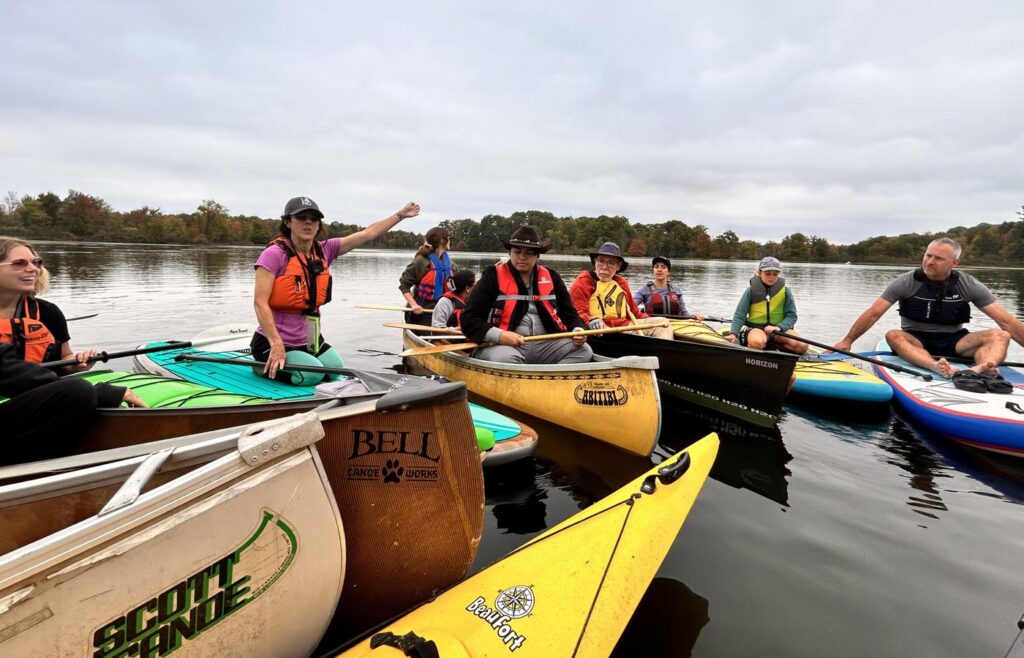Ramon Kataquapit travelled hundreds of kilometres from North Bay to Kingston this weekend to join events opposing Bill 5 because he has seen what mining has done to his community.
The youth leader from Attawapiskat First Nation says Ontario’s Bill 5, which lets the Ford government fast-track development in the mineral-rich Ring of Fire, could bring the same kind of damage already felt in the James Bay lowlands.
“We know the impacts of mining firsthand,” Kataquapit said. “When Doug Ford says First Nations will be well-compensated, we hear rhetoric not reality. We’ve lived through broken agreements, polluted waters and compromised health. That’s why I worry about what Bill 5 will mean for the next generations.”
Kataquapit is the founder of Okiniwak, a youth-led movement formed in response to Bill 5 and its federal counterpart Bill C-5. He said he fears future generations will pay the price if development moves ahead without free, prior and informed consent.

“This isn’t about rejecting progress,” he said. “We know Canada needs minerals, health care, roads and clean water. But that can’t come at the expense of treaty rights, the land and the future. It has to be done with respect, consultation and consent.”
The biggest unification ‘we’ve ever seen’
The Kingston events, “Standing for the Land: Taking on Bill 5,” brought together local residents, First Nations from the province’s north, legal experts, conservationists and advocates. The series featured a community paddle, a benefit concert and a panel discussion opposing the Ford government’s decision to designate the Ring of Fire as a “Special Economic Zone” for mining development. That designation allows the government to override otherwise mandatory steps that could slow down development, such as environmental assessments.
The youth leader from Attawapiskat First Nation says Ontario’s Bill 5, which lets the Ford government fast-track development in the mineral-rich Ring of Fire, could bring the same kind of damage already felt in the James Bay lowlands.
Opposition to Bill 5 is growing rapidly. A recent analysis of municipal meeting minutes by Canada’s National Observer showed more than 30 municipalities have passed motions, sent letters and urged federal intervention. Nine First Nations have also launched a constitutional challenge against both Bill 5 and federal Bill C-5, arguing the laws violate treaty rights and Canada’s obligations under the UN Declaration on the Rights of Indigenous Peoples.
Kerrie Blaise, founder and legal counsel at Legal Advocates for Nature’s Defence, a non-profit supporting Indigenous land defenders in northern Ontario, said the response to Bill 5 has been unlike anything she has seen.
“I truly think it’s the biggest unification of Indigenous and allied voices we’ve ever seen — whether from the endangered species perspective or from protecting Indigenous rights,” she said.
Blaise criticized the government for pushing the law through without consultation, saying it only wanted to hear from mining interests. Her clients — including the Friends of the Attawapiskat River and youth groups — argue what happens in the Ring of Fire will set a precedent. If development goes ahead there, it could open the door for similar projects across the province.
“That’s why people across Ontario need to rise up in their communities and say this is not how the government should work,” she said.
Blaise stressed that environmental assessments are not barriers but essential safeguards. They identify risks to water, land, biodiversity, species and culture, and show how contaminants might spread. Once pollution occurs, she warned, it cannot be undone.
“Environmental assessments build trust, create openness and give people a say,” she said. “Without them, people lose trust in the government.”
Ford pushes ahead
The Ring of Fire, located in the James Bay Lowlands, holds a 5,000-square-kilometre deposit of key minerals needed for electric vehicles and renewable energy technologies. It also contains one of the world’s largest peatlands, which store an estimated 26 gigatons of carbon.
Despite pushback, earlier this month the province approved a $61.8 million access road project — the first Ring of Fire road to be fast-tracked under Bill 5 — described as the “gateway” to the mineral-rich region.
Ford and Carney have pitched development of the Ring of Fire as a strategic response to US trade threats, arguing it will create jobs and strengthen economic sovereignty.
Critics, however, warn that moving ahead before completing environmental reviews and First Nations consultations could backfire and delay projects rather than speed them up.
“Bill 5 is not just about the Ring of Fire — it affects all Ontarians,” said Kristen Lowitt, associate professor of environmental studies at Queen’s University and one of the organizers. “It weakens environmental assessments, cultural heritage safeguards and mining regulations.”
Lowitt said hosting Treaty 9 leaders in Kingston was a way to bridge the gap between north and south. “These events are about creating networks and relationships. Treaty 9 might feel far away, but when people from the north come here to share their struggles, it connects us. Protecting land and Indigenous rights matters to everyone in Ontario.”
She added that Bill 5 was passed quickly, but it could still be repealed or changed. “We don’t need this bill. The real conversation should be about if, where and how development should happen and ensuring Indigenous rights-holders are part of that decision. Bill 5 takes us in the wrong direction.”
For Kingston resident and long-time advocate Mara Shaw, who joined the weekend paddle, the issue comes down to democracy.
“The organizers of this visit aren’t specifically environmentalists or rabble-rousers,” she said. “We are just citizens of a democratic province who want thoughtful government, not the sledgehammer of Bill 5. We hope Ontarians will join us in raising concerns and advocating for a better way forward.”
For Kataquapit, the fight against Bill 5 is also about legacy.
“This is about leaving behind a healthy legacy,” he said. “We’re not just thinking about ourselves. We’re thinking about the generations to come — and what they will inherit if we let these bills stand.”







